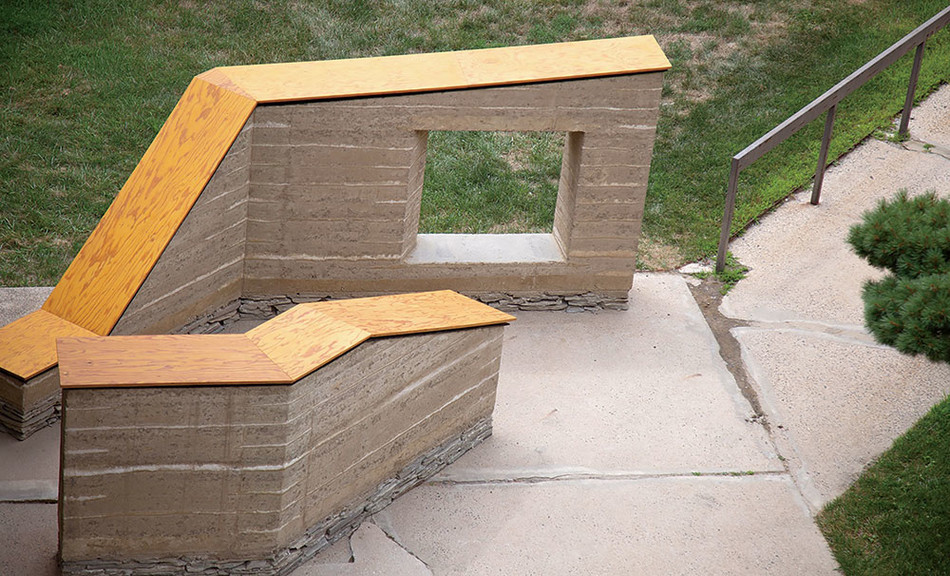Lola Ben-Alon sloshes water into a tray of dirt and plunges her fingers into the muck. She smears it between her hands to see if it cakes on her skin, then mashes it into a sticky lump. “You need to know how much clay is in the soil,” she says. “That’s the first criterion for determining if it’s suitable for construction.” Ben-Alon is an assistant professor at Columbia’s Graduate School of Architecture, as well as an engineer, curator, and scientist. She directs the Natural Materials Lab and she and her team believe that constructing with earth, plant matter, and even living organisms can go a long way toward healing the environmental damage wrought by concrete and steel.
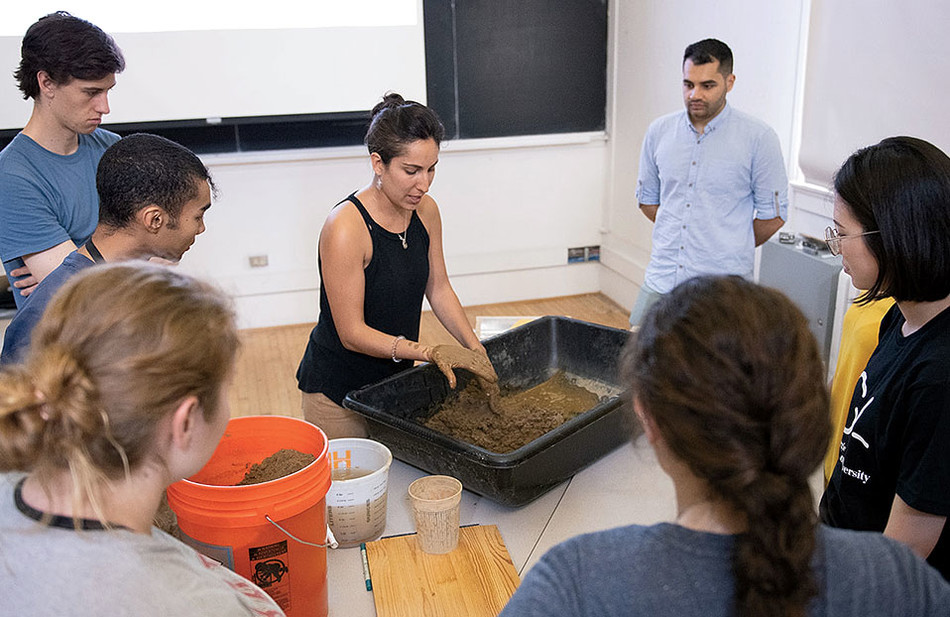 The lab looks more like an art room than the cradle of innovation. A 3D printer and an eleven-foot crane stand along one wall. Vats of soil, piles of brownish baskets, and plastic bags filled with stringy plant stems, husks, and straw occupy every surface. “We have dung!” she says, opening a sack. She gestures to another: “This is banana fiber.”
The lab looks more like an art room than the cradle of innovation. A 3D printer and an eleven-foot crane stand along one wall. Vats of soil, piles of brownish baskets, and plastic bags filled with stringy plant stems, husks, and straw occupy every surface. “We have dung!” she says, opening a sack. She gestures to another: “This is banana fiber.”
 At times, her analytical techniques can seem intuitive. “I listen to sand,” she says. “It’s a very deep conversation.” An angular, faceted grain works best for construction because it binds well. “So you crunch sand in your ear, and if it makes that chtkr chtkr sound, that’s good. Round sand, on the other hand, is better for finishes, because it makes a smooth, workable mixture. Totally different sound.” Each day at the lab begins with stirring together experimental blends of sand, soil, clay, water, and fibers, then turns to analyzing how well different variables affect their plasticity, strength, and resilience. “We’re swimming in a pool of endless possibilities,” she says. “Mostly we try to work with something, and if it goes well, we try to figure out why.”
At times, her analytical techniques can seem intuitive. “I listen to sand,” she says. “It’s a very deep conversation.” An angular, faceted grain works best for construction because it binds well. “So you crunch sand in your ear, and if it makes that chtkr chtkr sound, that’s good. Round sand, on the other hand, is better for finishes, because it makes a smooth, workable mixture. Totally different sound.” Each day at the lab begins with stirring together experimental blends of sand, soil, clay, water, and fibers, then turns to analyzing how well different variables affect their plasticity, strength, and resilience. “We’re swimming in a pool of endless possibilities,” she says. “Mostly we try to work with something, and if it goes well, we try to figure out why.”
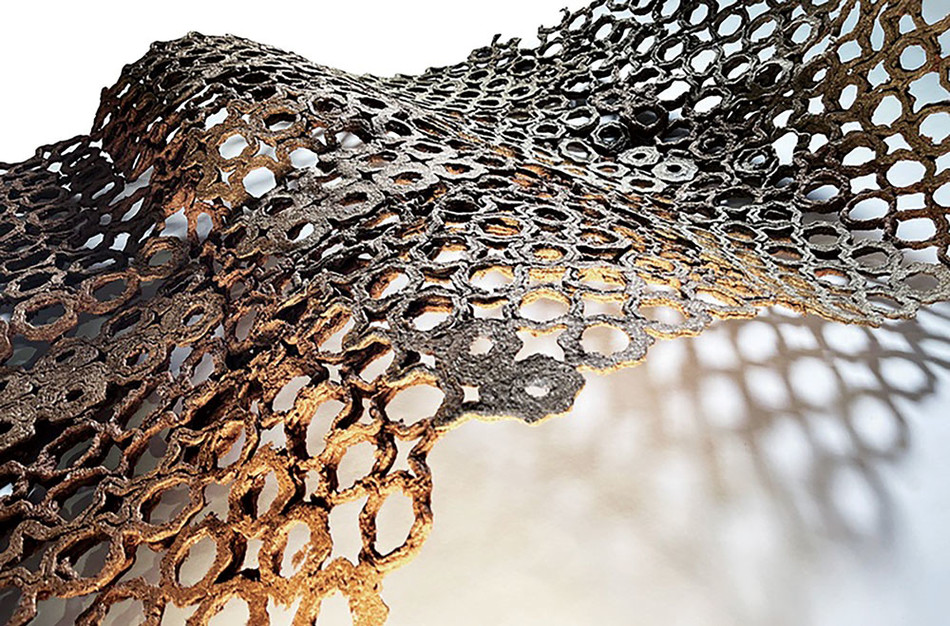 The ideal result of all this trial and error would be a catalog of standardized low-carbon products like prefabricated rammed-earth wall panels, natural-fiber insulation batts, and clay-rich finishes, all of them cheap, reliable, and abundant enough to replace today’s fiberglass, metal facade assemblies, oil paint, and synthetic foam. There are perforated tiles, scraps of imitation leather, rolls of mesh, garlands of rope, and a structure that looks like a scale model of three intertwined skyscrapers. All are made of fiber and earth.
The ideal result of all this trial and error would be a catalog of standardized low-carbon products like prefabricated rammed-earth wall panels, natural-fiber insulation batts, and clay-rich finishes, all of them cheap, reliable, and abundant enough to replace today’s fiberglass, metal facade assemblies, oil paint, and synthetic foam. There are perforated tiles, scraps of imitation leather, rolls of mesh, garlands of rope, and a structure that looks like a scale model of three intertwined skyscrapers. All are made of fiber and earth.
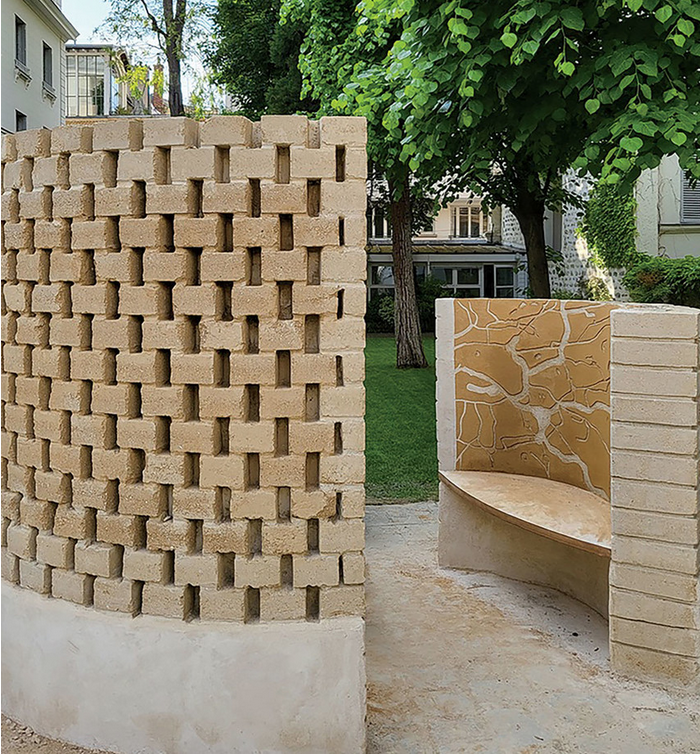 There is an urgent need to develop testable standards for the manufacture of these materials and their use in construction. Ben-Alon already has extensive experience on that front, since she wrote an official addendum to the International Building Code that covers cob. “Cob has been used everywhere, including in the US, but there was no permitting process, so people used it either illegally or for tiny structures, less than 120 square feet. Now there’s an approved construction method and safety standards, so it can be used much more broadly.”
There is an urgent need to develop testable standards for the manufacture of these materials and their use in construction. Ben-Alon already has extensive experience on that front, since she wrote an official addendum to the International Building Code that covers cob. “Cob has been used everywhere, including in the US, but there was no permitting process, so people used it either illegally or for tiny structures, less than 120 square feet. Now there’s an approved construction method and safety standards, so it can be used much more broadly.”
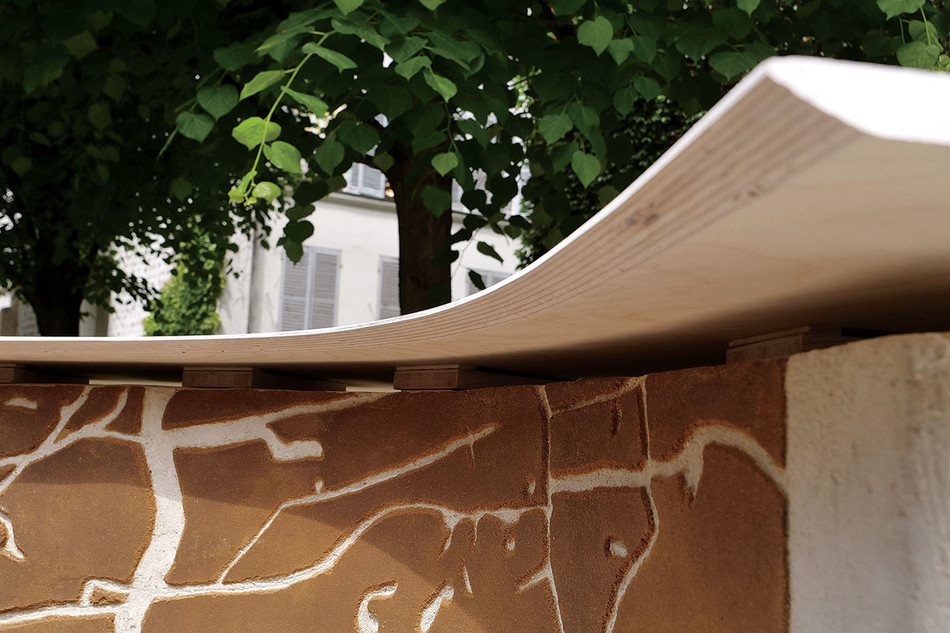 The first thing everyone wants to know about earthen construction is whether it falls apart in the rain. A few thousand years of experience would suggest it doesn’t. “The thing about earth-and-fiber material is that if it gets wet and then the water evaporates, that’s fine,” Ben-Alon says. And anyone who fears that such buildings will simply crumble away without steel or concrete backbones need only take a look at the city of Sana’a in Yemen, where rammed-earth apartment buildings have been standing for centuries.
The first thing everyone wants to know about earthen construction is whether it falls apart in the rain. A few thousand years of experience would suggest it doesn’t. “The thing about earth-and-fiber material is that if it gets wet and then the water evaporates, that’s fine,” Ben-Alon says. And anyone who fears that such buildings will simply crumble away without steel or concrete backbones need only take a look at the city of Sana’a in Yemen, where rammed-earth apartment buildings have been standing for centuries.
Today, the relationship between natural and built environments looks far more perilous. Climate change menaces cities in ever more ferocious ways, giving architects and engineers new threats to resist and to mitigate: storm surges, flooding rivers, heavy rains, rising sea levels, wildfires, and heat waves.

Ben-Alon understands the challenges of standardizing such experience-based design, but she still hopes to smuggle her grimy-paw ethos into the capitalist system. Doing so need not involve a complete rejection of building-as-usual. “We shouldn’t fall into the trap of thinking we need to replace concrete and steel. It will not happen. Concrete and steel are not the enemy.” The enemy is the habit of using them by default.
She has scant interest in persuading institutional clients and glamorous architects to erect all-adobe museums. A deluxe organic one-off won’t make much of an impact, no matter how green it claims to be. She’d rather take a quieter, more promising route, developing affordable off-the-shelf organic components. The future, Ben-Alon insists, lies in the aisles of home-improvement stores. That may seem an unlikely front for radical change, but she has confidence in the combination of growing urgency and rigorous innovation. “Once these products show up at Home Depot,” she says, “I’m retiring.”
You can read the original article at magazine.columbia.edu

